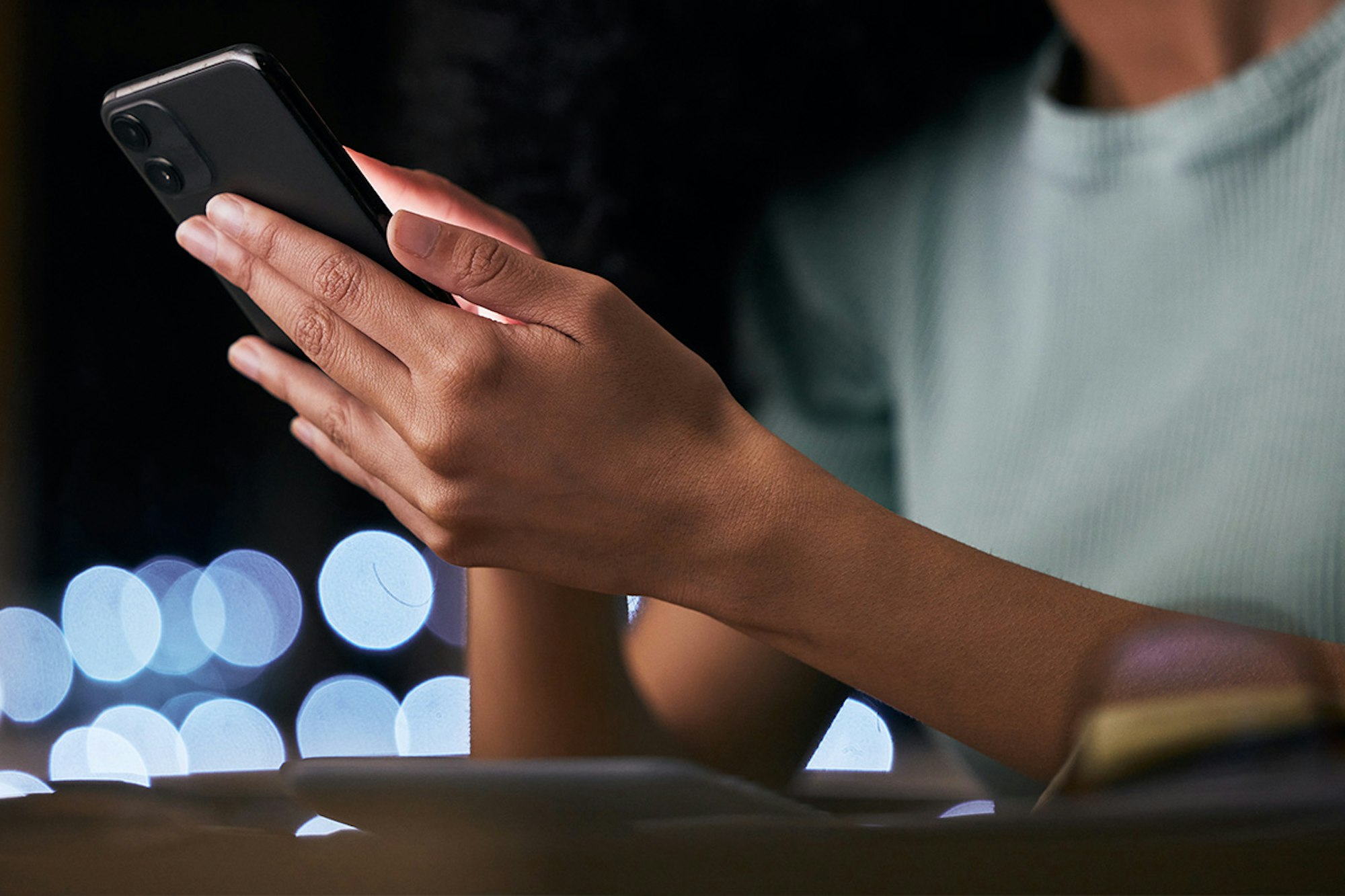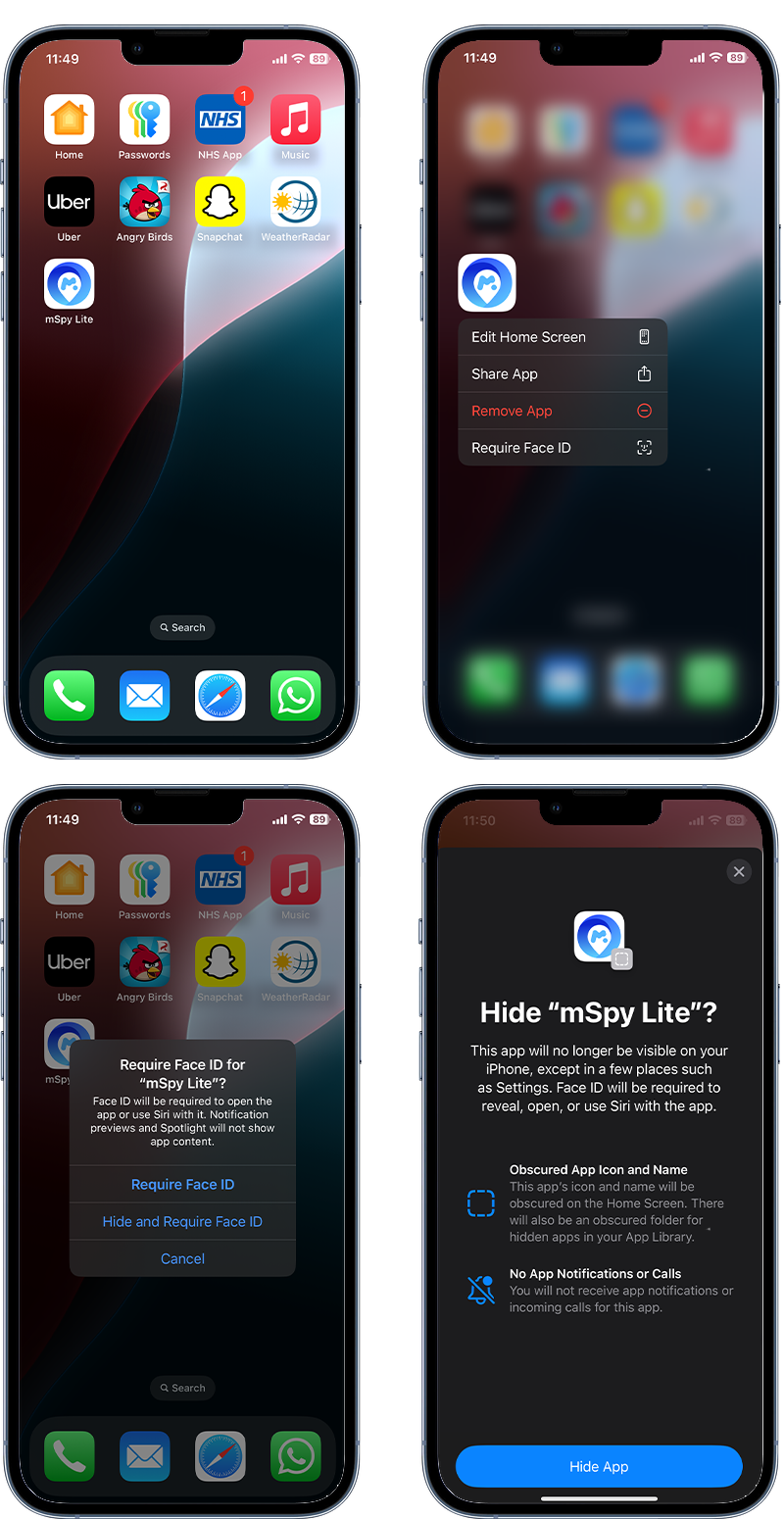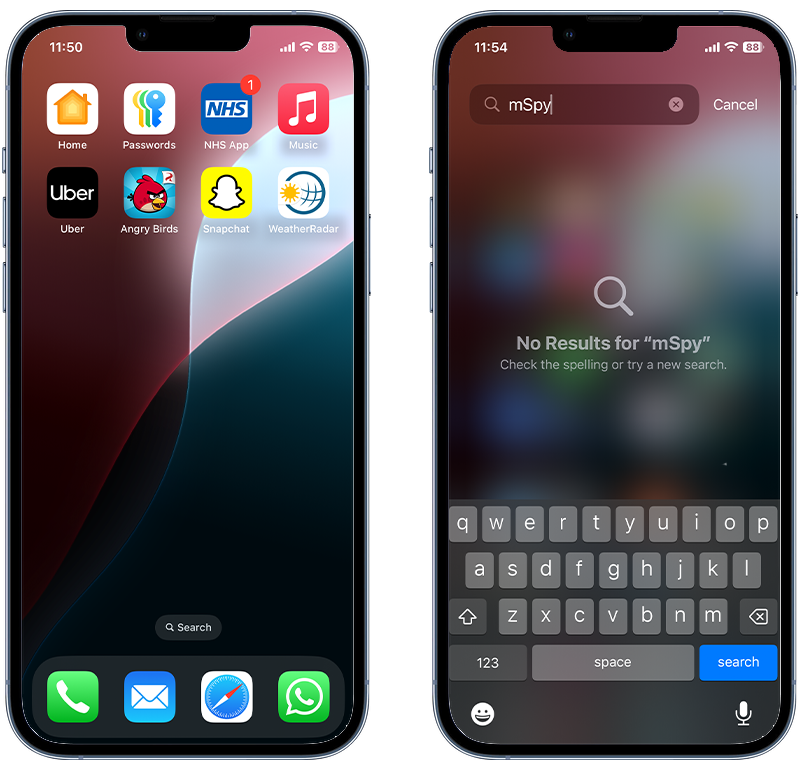Hidden Apps Feature in iOS 18: Privacy Booster or Security Risk?

Published:

iOS 18, Apple’s forthcoming operating system, promises a wealth of new features, including a controversial one: the ability to hide apps.
Although intended to enhance privacy, this feature has ignited a debate about its potential for misuse and security risks.
In this article, we’ll delve into this new feature, explore its intended purpose, unveil how it works, and examine its potential risks to users. Let’s get right into it.
A New Level of Privacy?
Being introduced in iOS 18 later this year, the new hidden apps feature lets users conceal specific apps in a dedicated folder. This hides the app’s icon from the home screen and masks its content from search results and notifications.
Here’s how an iOS 18 user would hide an app:
- Long press the app icon on the Home screen until the menu appears.
- Tap Require Face ID.
- Tap Hide and Require Face ID.
- Tap Hide App.
The app is then sent to the hidden apps folder. This folder can only be accessed from the App Library and requires Face ID or the device passcode to open. This means that anyone looking through the apps on the device’s home screen will not see the hidden app.
Or A New Risk for Victims of Cyberstalking?
While Apple’s hidden apps feature aims to enhance privacy, it also has the potential to be abused by cyberstalkers as it gives them an easy way to conceal spyware on their victim’s iPhone.
For example, if a cyberstalker has physical access to their victim’s iPhone, which is common in domestic tech abuse situations, they could install a spy app and then use this new feature to hide it from view.

Fig 1. Hiding a spy app on an iPhone running iOS 18.
Once the spy app is hidden, it’s removed from the Home screen, won’t show any notifications and doesn’t appear in search results.
Prior to iOS 18, an iPhone would need to be jailbroken in order for an app to be hidden to the same extent.

Fig 2. Searching for a hidden spy app on an iPhone running iOS 18.
The ability to hide apps is especially concerning for those in a relationship with a controlling or jealous partner who commonly have access to their victim’s phone and can then misuse this feature in order to cover their tracks.
This feature adds another layer of difficulty for victims of cyberstalking. Unless the victim knows to check their Hidden Apps folder regularly, the spy app remains there and could go unnoticed for weeks or even months.
Finding the Hidden Apps folder isn’t easy and most users likely wouldn’t even know it’s there. We’ll show you how in the next section.
Fortunately, spyware detection tools can still identify these hidden apps, but they are only effective if users are vigilant and proactive about checking their devices for potential threats.
How To Protect Yourself
1. Regularly check the Hidden Apps folder
When iOS 18 is launched sometime in September 2024, familiarize yourself with the hidden apps feature and periodically review the Hidden Apps folder to ensure no unauthorized apps have been placed there.
Set a routine to check this folder, especially if you suspect any unusual activity. Here’s how to check:
1️⃣ From the Home screen, keep swiping to the left until you reach the App Library screen.
2️⃣ Scroll down to the bottom until you see a folder with the name ‘Hidden’.
3️⃣ Tap the ‘Hidden’ folder to view its contents (Face ID or passcode required).

Fig 3. Checking the Hidden Apps folder on iOS 18.
2. Enable and monitor screen time
Apple’s Screen Time feature can help you monitor app usage and detect any hidden or unfamiliar apps. By reviewing your app usage patterns regularly, you can spot anomalies that indicate the presence of hidden apps.
3. Secure your iPhone
To keep your device secure, set up Face ID or a passcode. Avoid using an easily guessable passcode such as birthdays or simple number sequences and don’t share it with anyone.
You should also check for any additional Face IDs that may have been setup on your iPhone without your knowledge. Many don’t realize that someone with access to your iPhone could add their own face as a secondary Face ID and use this to unlock your iPhone. Check this under Settings > Face ID & Passcode.
4. Limit physical access
Limit physical access to your iPhone. Here’s how:
➡️ Never leave your phone unattended: Keep your iPhone with you at all times, especially in shared spaces.
➡️ Lock your screen: Always lock your screen when you’re not using your phone.
➡️ Be mindful of shoulder surfing: Be aware of your surroundings when entering your passcode – someone could be watching.
If you suspect someone has had unauthorized access to your device, review your settings and hidden apps immediately.
Final Thoughts
The hidden apps feature in iOS 18 offers a significant step forward for user privacy, giving individuals greater control over their personal information.
However, it’s important to be aware that this feature, like any technology, has the potential for misuse, especially in situations involving controlling or abusive partners.
While Apple’s efforts to enhance privacy are commendable, it’s crucial for users to understand that even well-designed features can be exploited.
As you explore iOS 18, remember to stay informed about potential risks and take proactive steps to protect your mobile security.